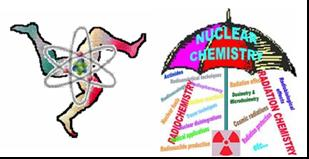Speaker
Mr
Paweł Grabowski
(Technical University of Lodz)
Description
March 11, 2011 as a result of earthquakes and tsunamis the reactor No. 1 in Fukushima Dai-ichi in Japan has been breakdown. As a consequence of failure the release of significant amounts of radionuclides such as I-131, Cs-137, Cs-134, Te-131 and the other to the atmosphere was observed. Emitted isotopes were transported with air masses even at considerable distances. The concentrations of some these radionuclides were also observed over the Polish territory. The highest concentrations of I-131 (about 8 mBq/m3) was observed in the central part of the Polish, the third week after the accident. The maximum observed concentrations of Cs-137 and Cs-134 was 0,75 and 0,61 mBq/m3, respectively. In order to verify the exact radiological consequences of I-131 inhalation it is important to know their distribution in air particulate matter.
The highest concentration of I-131 [μBq/m3] is observed for the smallest aerosols, with diameter lower than 1 μm (filter number 9-this value is twice higher of that for bigger fractions in range from >2 μm). As we expect I-131 is predominantly linked to small and mobile fraction of aerosols.
Information about the distribution of concentrations in different fractions of aerosols can be used to estimate the rate of spread of the radionuclides. In addition, it is possible to estimate the delivered dose for the occupants of the various regions. Monitoring the transport of radionuclides in the atmosphere is an important element of radiological exposure assessment. It should be emphasized that the observed isotope concentrations in the air in the central part of the Polish were not dangerous for the residents, but their observation is an excellent test of the efficiency of use monitoring systems.
Primary author
Dr
Magdalena Długosz - Lisiecka
(Technical University of Lodz)
Co-authors
Prof.
Bem Henryk
(Technical University of Lodz)
Mr
Paweł Grabowski
(Technical University of Lodz)




